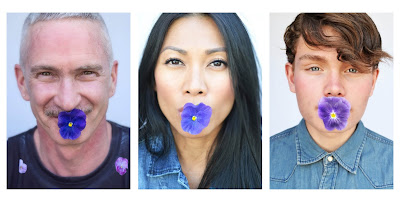The Origin
 A string of homophobic abuse on a warm summer’s day was the catalyst for this project. The day began with two builders shouting; “it’s about time we went gaybashing again isn’t it?”; continued with a gang of yobs throwing abuse and stones at my boyfriend and me, and ended with a bizarre and unsettling confrontation with a man who called us ‘ladies’ under his breath. Over the years I have become accustomed to this kind of behaviour, but I came to realise it was a shocking concept to most of my friends and colleagues.
A string of homophobic abuse on a warm summer’s day was the catalyst for this project. The day began with two builders shouting; “it’s about time we went gaybashing again isn’t it?”; continued with a gang of yobs throwing abuse and stones at my boyfriend and me, and ended with a bizarre and unsettling confrontation with a man who called us ‘ladies’ under his breath. Over the years I have become accustomed to this kind of behaviour, but I came to realise it was a shocking concept to most of my friends and colleagues.
It was in this context that I began to ponder the nature of these verbal attacks and their influence on my life. I realised that I felt differently about these experiences depending on my mental state so I decided to explore the way I was made to feel at the location where these incidents occur. What interested me was the way that the locations later acted as a prompt for me to explore the memories associated with that place. I wanted in some way to manipulate these associations, In order to feel differently about the location and the memories it summoned.
I became interested in the public nature of these incidents and the way one was forced into reacting publicly to a crime that often occurred during the day and in full view of passers by. I had observed the tendency to place flowers at the scene of a crime or accident had become an accepted ritual and I considered a similar response. Floral tributes subtly augment the reading of a space that encourages a passerby to ponder past events at a marked location, generally understood as a crime or accident; my particular intervention could encourage a passerby to query the reason for my own ritualistic action.
However, I did not feel it would be appropriate to equate my personal experience of verbal homophobic abuse with a death or fatal accident; I felt that planting a small unmarked living plant at the site would correspond with the nature of the abuse: A plant continues to grow as I do through my experience. Placing a live plant felt like a positive action, it was a comment on the abuse; a potential ‘remedy’.
The species of plant was of course vitally important and the pansy instantly seemed perfect. Not only does the word refer to an effeminate or gay man: The name of the flower originates from the French verb; pensar (to think), as the bowing head of the flower was seen to visually echo a person in deep thought. The subtlety and elegiac quality of the flower was ideal for my requirements. The action of planting reinforced these qualities, as kneeling in the street and digging in the often neglected hedgerows felt like a sorrowful act. The bowing heads of the flowers became mournful symbols of indignant acceptance.
So my eventual strategy would be to plant unmarked pansies as close as possible to where I received verbal homophobic abuse. I would then entitle the location after the abuse and post a photograph of the pansy alongside the quoted abuse online.
What was originally an autobiographical work has become a project that has been embraced by the gay community, who seemed to see the project as way to deal with a shared experience as many members of the LGBT community have experienced bullying or abuse at some point. Events where I have handed out pansies for people to memorialise their own locations have been well attended as have sessions I have hosted which have been designed to introduce the project to a wider audience.
My research has revealed that the process of planting a pansy at the scene of these incidents alters the participant’s experience of the city. The memorialised locations primarily become a place where the participant has planted a pansy, not where an attack has occurred. This action adjusts the memory of each location which has the effect of overlaying the remembered event in the mind of the participants with a more positive association.
The website enables the images of the ephemeral acts to be collated and presented to a wide audience who can then vicariously explore the nature of the incidents. The juxtaposition of the images of the delicate flowers placed in derelict urban settings with frequently offensive and hurtful abuse creates a complex anthology of homophobic verbal abuse as experienced by gay people in towns and cities today. The humble planted pansy becomes a record; a trace of this public occurrence which is deeply personal and concurrently available to the public on the city streets and on-line.
When verbal homophobic abuse is experienced the assailant forces the unwilling participant to assimilate and respond to this public verbal attack; ignore or retaliate? The Pansy Project acts as a formula which prevents the ‘victim’ from internalising the incident, the strategy becomes a conceptual shield; a behaviour that enables the experience to be processed via the public domain in this case the location where the incident occurred and latterly the website which collates ands presents the incidents and operates as a virtual location of quiet resistance.

